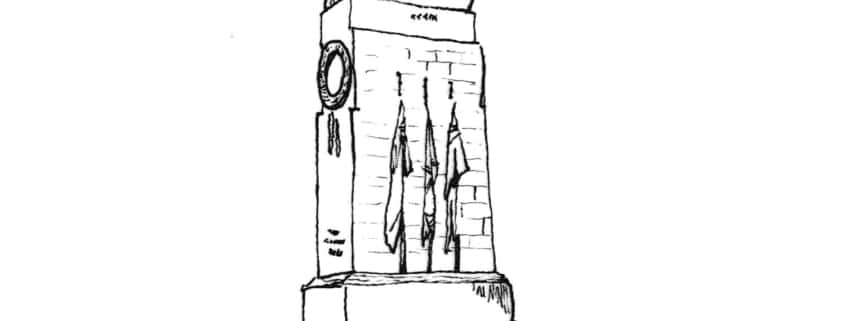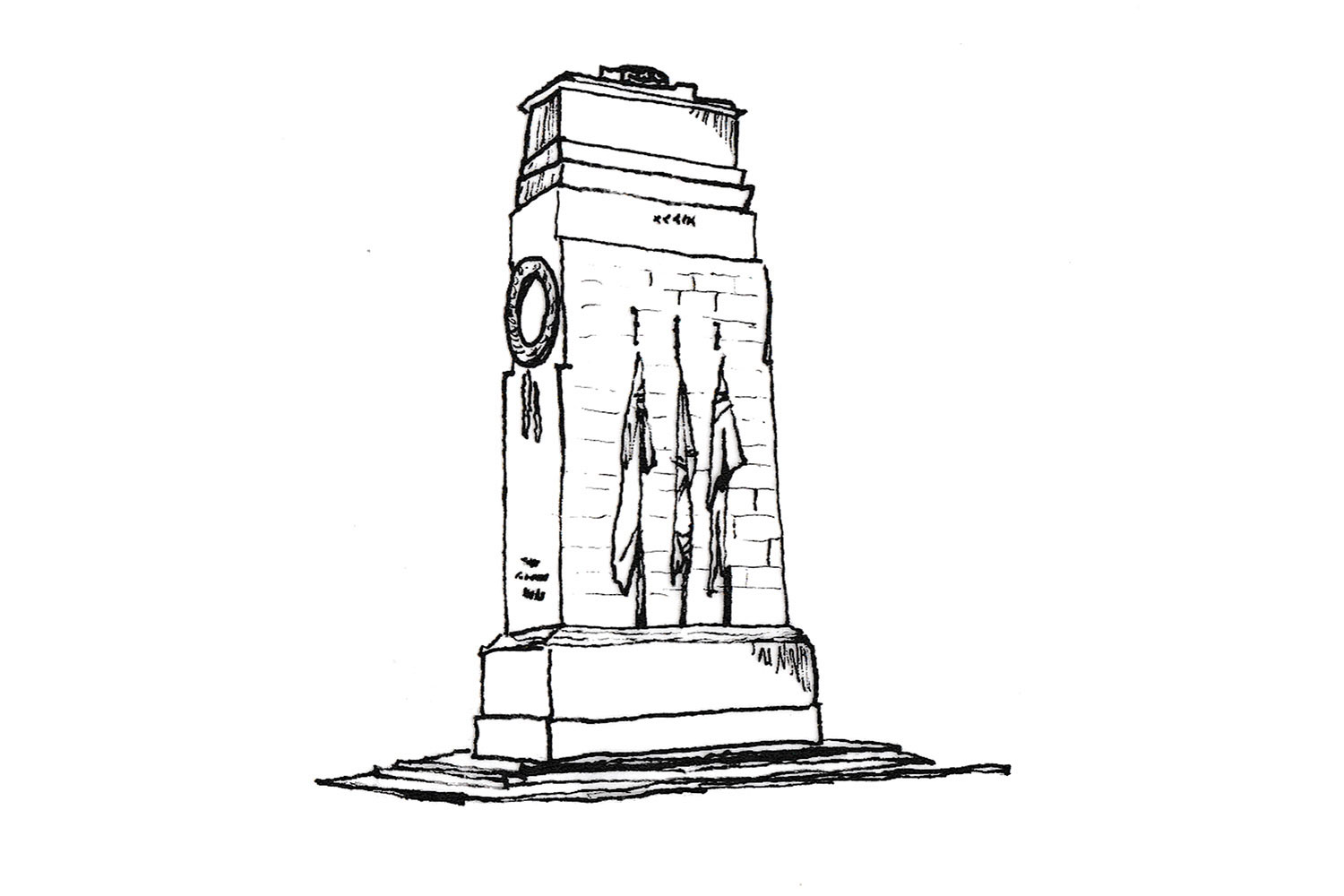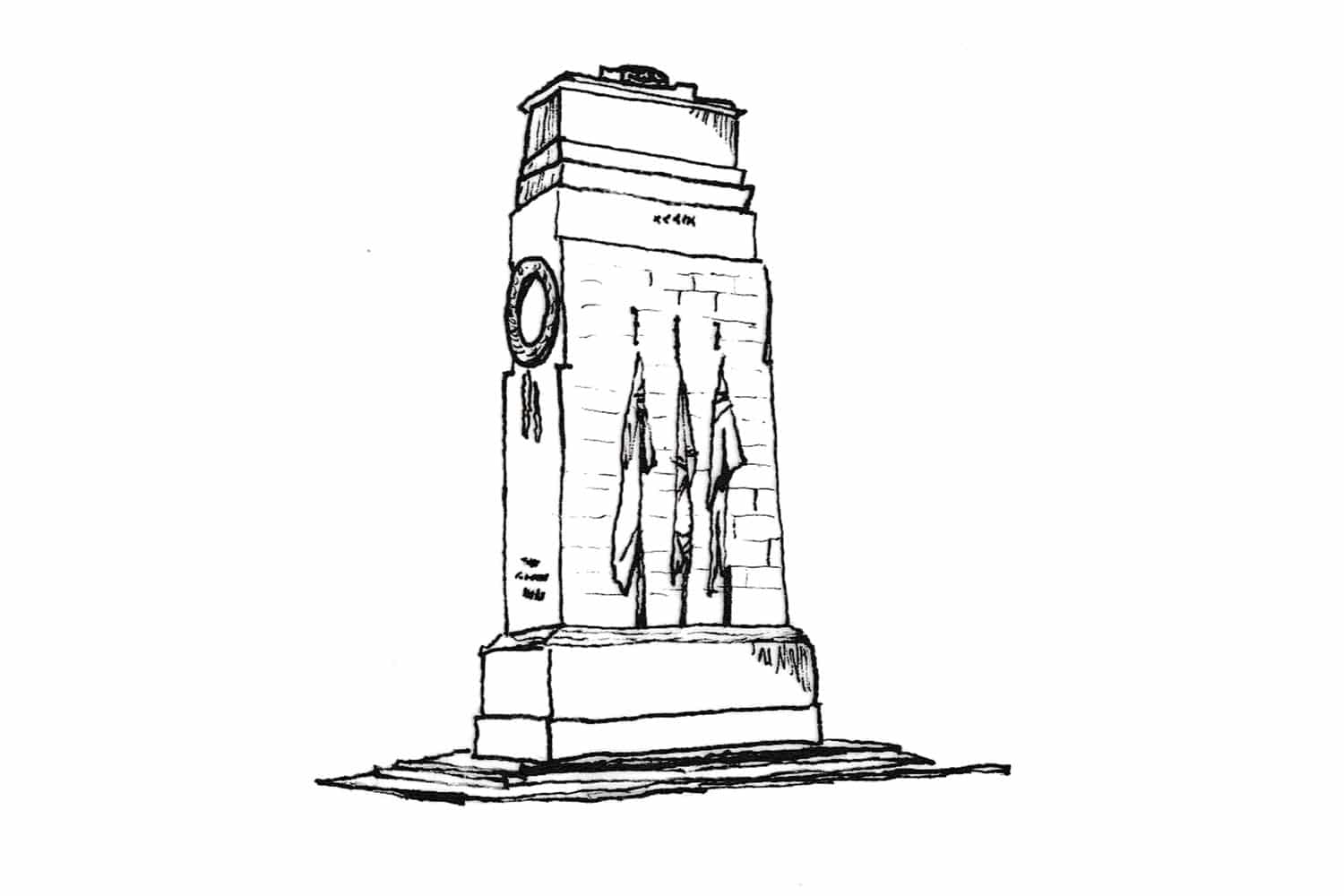
Description
The cemetery was begun in February 1917 and was used by medical units until March 1918. It was extended after the war when graves from other cemeteries were transferred here. 158 French and 35 German graves were transferred to other cemeteries.The cemetery lies on a slope at the back of the French military cemetery – which also contains British graves – and is accessible by way of a grassy path starting at the rear exit. The cemetery has an irregular layout. The entrance is formed by a stairway leading to a plateau with the Cross of Sacrifice and the shelter, offering a view of the cemetery and the War Stone amidst the headstones.
The realization is characteristic of assistant architect Cowlishaw, who already had a career behind him as an Arts and Crafts architect, a British movement of architects who felt very strongly about traditional craftsmanship. As is the case in Favreuil British Cemetery and Beaulencourt British Cemetery near Bapaume, the white moulding is highly accentuated, with staggered cornerstones. The shelter is very detailed, with much relief in the natural stone and with a slate gable roof. The ceiling on the inside, on the other hand, is dome-shaped and has been realized in beige natural stone, like the rest of the interior. There are a bench and two semicircular transom windows. The pillars of the entrance are similar to those applied more often by assistant architect Goldsmith, at Monchy British Cemetery for example. In this case they are also part of the entrance to the nearby British part of Cerisy-Gailly French National Cemetery, the design of which was worked out by Gold- smith. Cowlishaw stylized and realized the pillars in cohesion with the entrance and the shelter, in a combination of grey-brown and white natural stone.
The difference in elevation of the ground near the entrance is overcome by a stairway with two balconies. The contiguous plateau near the pavilion links up with the field with the headstones. The rest of the cemetery rises gradually. The wall surrounding the cemetery does not follow the differences in elevation in brusque steps, as is the case in Puchevillers British Cemetery, for example, but by means of white covering slabs of natural stone that gradually follow the rise. As the wall at the entrance is folded inwards, as it were, the visitor is guided into the cemetery. The small cupboard containing the register is incorporated in the wall of the stairway.
The graves in plots i and ii, which were constructed during the war, face two directions respectively. The War Stone was situated in the easternmost position of the field after the Armistice. The new graves were established in plot iii, facing the War Stone. It is not clear why the War Stone was not placed near the entrance. The reason may have been that there was not enough space. There is a bench of natural stone opposite the War Stone that is characteristic of assistant architect Cowlishaw’s design.
There is now a solitary birch on the right at the bottom of the cemetery. The roses in front of the headstones are divided into a pink and a red section in order to break the length of the field to some extent. (Geurst, 2010, p.237-8)
Bibliography
Geurst, J. (2010) Cemeteries of the Great War by Sir Edwin Lutyens. Rotterdam: 010 Publishers.Also Cited In
Listing Grade
Coming soonListing Reference
Client
Imperial War Graves Commission


